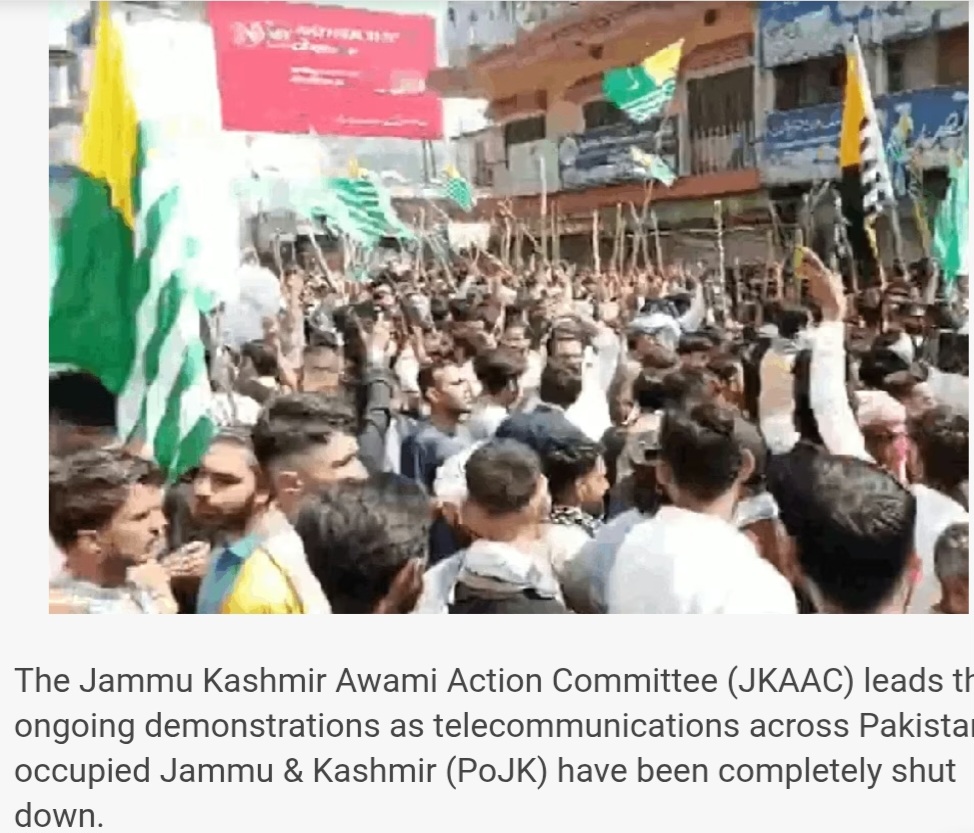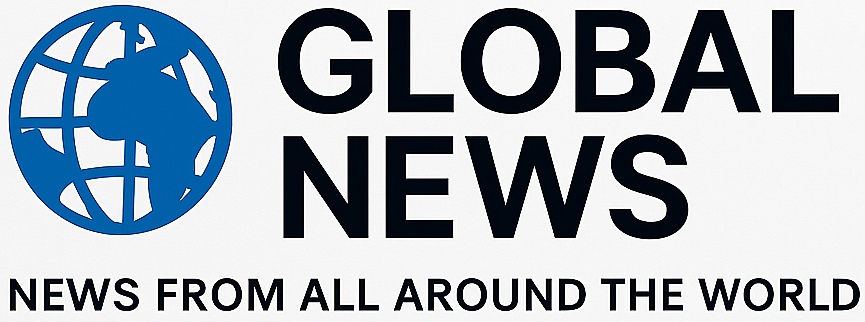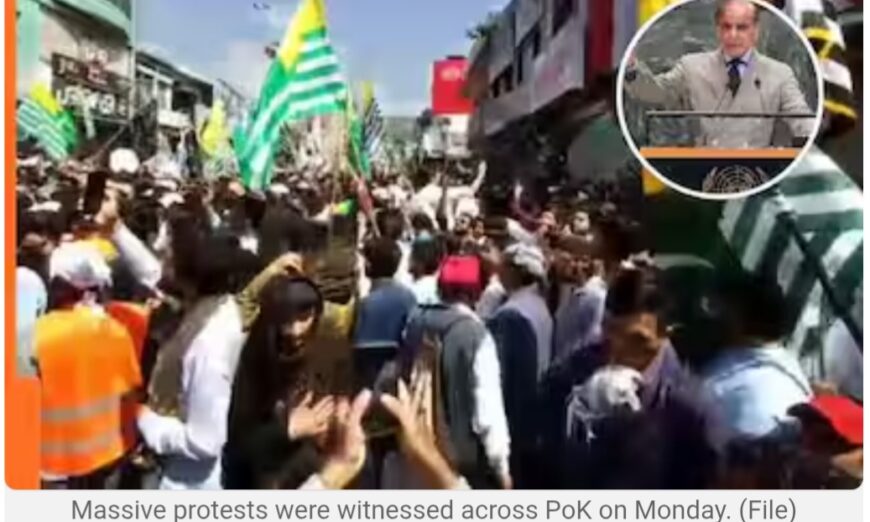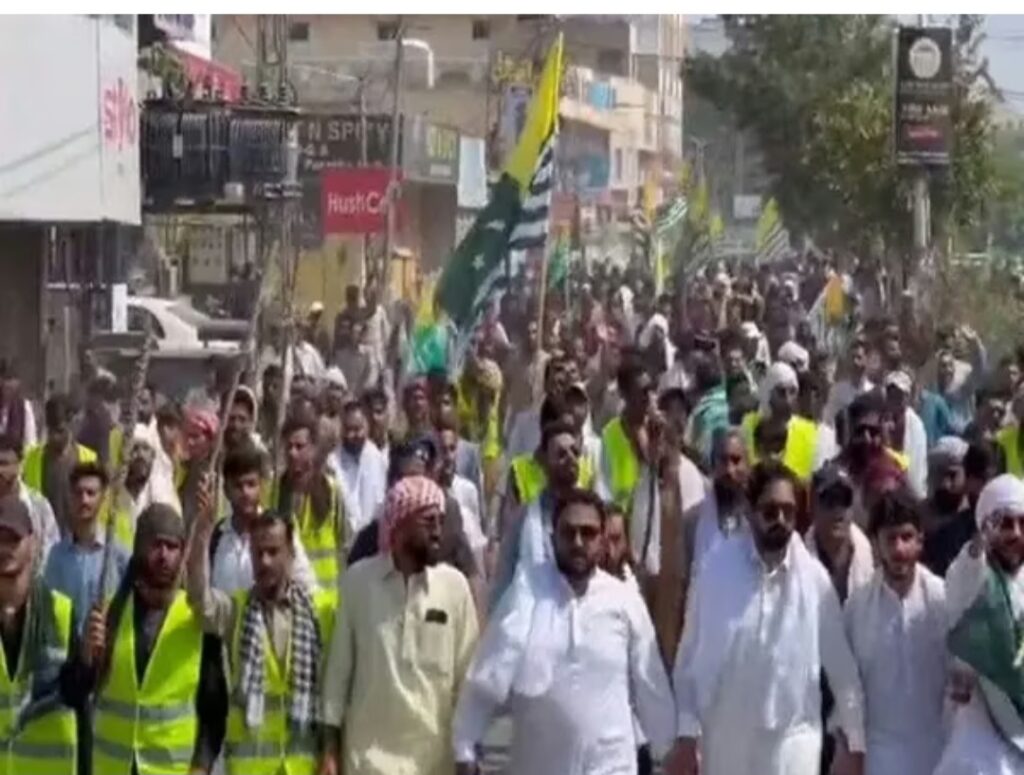
Widespread unrest has gripped Pakistan-occupied Jammu & Kashmir (PoJK), with violent protests and mass demonstrations erupting across key districts.
Demonstrators from Rawalakot and Mirpur, mobilised by the Jammu & Kashmir Awami Action Committee (JKAAC), reached Dadyal in Kotli despite attempts by security forces to block their path with containers.
At Lal Chowk in Muzaffarabad, tensions peaked when police opened fire on protesters, resulting in two deaths and several injuries. Protesters continued their march, demanding the restoration of mobile services and threatening to dismantle communication towers.
In Rawalakot, large gatherings voiced anger over the exploitation of local resources and political repression. In Bagh, clashes led to the capture of several Punjab Police personnel by locals.
The JKAAC leadership has presented a 38-point charter of demands, including electoral reforms and an end to elite privileges. Security convoys entering cities have raised fears of a severe crackdown.
Mass protests have erupted across Pakistan-occupied Kashmir (PoK) as thousands have hit the streets against rampant corruption, government apathy and brutal suppression of fundamental rights in the strategic region.
On Monday, a complete shutdown was observed across PoK while the Neelum Valley Public Action Committee launched massive demonstrations, raising tensions in the region as Islamabad deployed large number of security forces to crush the protsts.
*
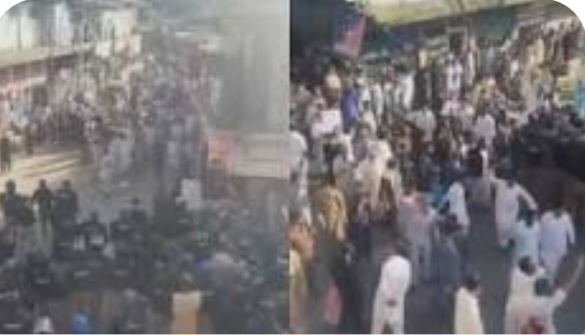
Mass protests have erupted across Pakistan-occupied Kashmir (PoK) as thousands have hit the streets against rampant corruption, government apathy and brutal suppression of fundamental rights in the strategic region. On Monday, a complete shutdown was observed across PoK while the Neelum Valley Public Action Committee launched massive demonstrations, raising tensions in the region as Islamabad deployed large number of security forces to crush the protstors.
Protests intensified across Pakistan-occupied Kashmir (PoK) with reports emerging of , mobilisation, large gatherings, violent clashes and casualties across multiple districts. There had been reports of two deaths and several other injuries. Mobile and internet services remained patchy and discontinued. There had been a call for march towards Muzaffarabad on October 1.
Security forces blocked the convoy of the Jammu & Kashmir Awami Action Committee (JKAAC), marching from Rawalakot and Mirpur. Authorities used containers to halt progress, and protesters removed the barriers and pressed ahead towards Muzaffarabad.
There were reports of an open fire at the Lal Chowk in Muzaffarabad, resulting in the death of two and dozens of injuries. The JKAAC has demanded immediate restoration of the mobile services and threatened to dismantle communication towers. Violent clashes were also reported in Bagh, where protestors allegedly detained personnel of the Punjab police.
In Rawalkot, thousands of protestors have emerged raising slogans over ownership of local resources and Kashmiri rights, reflecting frustration with Pakistan’s policies. This is a contrasting picture, as once a hub of the anti-India activity, now showing signs of dissent against the Pakistani establishment.
Addressing a protest gathering in PoK capital Muzaffarabad, prominent action committee leader Shaukat Nawaz Mir said the protests were not directed against any particular institution, but aimed to push for fundamental rights of PoK natives who he claimed have been denied these rights for the last 70 years.
“Our campaign is not against any institution, but for the fundamental rights that have been denied to our people for 70 years. Our patience has worn thin, and this is the last resort in the push for our rightful demands,” he said
Analysts believe that the public anger in PoK, which has been simmering for the last seven decades, could spark a major rebellion in the region, akin to what is happening in Balochistan, especially if the Pakistani state uses military force to crush the protest and ignore the region’s demands.
The people of the region have fostered simmering anger against the Pakistani government for a long time, while Islamabad’s threat to use force against protesters has further exacerbated public outrage, with Shaukat Mir warning that people’s patience has worn thin.
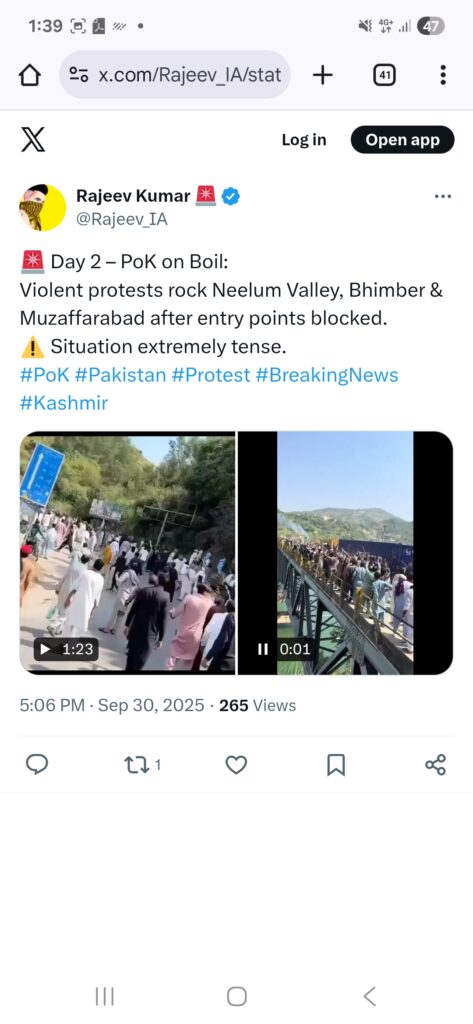
According to reports, Islamabad is preparing to use brutal force to deal with the protest, as heavily armed security personnel conducted flag marches in major PoK cities, while more troops have been deployed from Punjab to quell the protests. Over the weekend, the local police sealed and entry and exit points to major cities, while an additional 1,000-men strong force has been deployed from Islamabad to reinforce security forces in the region.
The Awami Action Committee (AAC) has united thousands under its banner in recent months, and has raised a 38-point charter demanding reforms, chief among them being the abolition of the 12 legislative seats in the PoK assembly for Kashmiri refugees living in Pakistan.
Additionally, crippling inflation and food crisis has added to people’s woes, with many comparing the facilities in PoK to those in Indian Kashmir, and accusing Islamabad of negligence and apathy which has resulted in their poor financial condition.
Earlier, a 13-hour marathon meeting between AAC negotiators, the PoK administration, and Pakistani central ministers failed to reach a resolution, following which the committee called for a shutdown in the region.
At the outset, these protest seems like anti-establishment protests; yet they are not rejecting or questioning the legitimacy of the state apparatus, unlike the Kashmiri separatist movements in India. Instead, the disputed territory is seeking representation, political integration, and social welfare benefits.
This creates a paradox: “We want better integration with Pakistan, but we are fighting Pakistan’s establishment to get it.” It challenges the decade-long narrative of Islamabad of contentment, painting PoK as the picture of ‘freedom and loyalty’. The protest can both strengthen and weaken integration.
If Islamabad offers concessions, they can result in deeper integration; if the crackdown is brutal, like shooting at Muzaffarabad, it has the potential to turn a rights protest into a secessionist cause.
